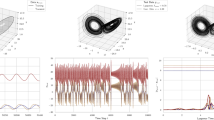Abstract
This paper describes the use of higher order neural networks to identify well reservoir response models from test data. Well reservoir response models are characterised by a family of parametrically related curves. Neural networks can in principle offer an interesting approach to the identification problem as data are often uncertain and incomplete. However, it turns out that the well reservoir model, viewed as a curve in two dimensions, is invariant with respect to translation and changes of scale of the axes. This poses severe problems for a standard backpropagation network using the two-dimensional plot as an input retina. This difficulty can be overcome by using a higher order network in which the output is forced to be invariant with respect to the required transformations of the retina. In this way, the potentially huge number of weights is significantly reduced using the invariance condition as a constraint which acts so as to divide the weights into equivalence classes within which they are equal. The resulting network can then be trained using standard techniques. We contrast this network approach with classical methods of model identification.
Similar content being viewed by others
References
Watson AT, Lee WJ. A new algorithm for automatic history matching production data. In: SPE 15228, SPE Unconventional Gas Technology Symposium, Louisville, KY, May 18–21 1986
Watson AT, Lane HS, Gatens III JM. Using weighted least squares for history matching cumulative production data. In: SPE 17063, Eastern Regional Meeting, Champion, PA, October 1987
Watson AT, Gatens III JM, Lane HS. Model selection for well test and production data analysis. In: SPE Formation Evaluation, March 1988; 215–221
Dogru HH, Dixon TN, Edgar TF. Confidence limits on the parameters and predictions of slightly compressible, single-phase reservoirs. SPEJ February 1977; 42–56
Gatens III JM, Lee WJ, Rahim J. Application of an analytical model to history match devonian shales production data. In: SPE 14509, SPE Eastern Regional Meeting, Morgantown, WV, November 6–8 1985
Al-Kaabi AU, McVay SA, Holditch SA, Lee WJ. Using an expert system to identify the well test interpretation model. In: 63rd Annual Technical Conference and Exhibition of the SPE, Houston, TX, October 2–5 1988
Rosenblatt F. Principles of Neurodynamics, Spartan, New York, 1962
Minsky ML, Papert S. Perceptrons, MIT Press Cambridge, MA, 1969
Hornik K. Multilayer feedforward networks are universal approximations. Neural Networks 1989; 2: 359–366
Maxwell T, Giles CL, Lee YC, Chen HH. Transformation invariance using higher order correlations in neural net architectures. In: Proceedings IEEE International Conference on Systems, Man, and Cybernetics, Atlanta, GA, October 1986; 627
Giles CL, Griffin R, Maxwell T. Encoding geometric invariances in higher order neural networks. Neural Information Processing Systems, American Institute of Physics, New York, 1988; 301–309
Giles CL, Sun GZ, Chen HH, Lee YC, Chen D. Higher order recurrent networks and grammatical inference. In: Advances in Neural Information Processing 2, DS Touretzky (Ed) Morgan-Kaufmann, San Mateo, CA, 1990; 380
Perantonis SJ, Lisboa DJG. Translation, rotation, and scale invariant pattern recognition by high-order neural networks and moment classifiers. IEEE Trans Neural Networks 1992;3(2): 241–251
Herstein IN. Topics in Algebra, Xerox Publishing, Lexington, MA, 1964
Cinco H. Evaluation of hydraulic fracturing by transient pressure analysis methods. In: SPE International Petroleum Exhibition and Technical Symposium, Bejing, China, March 18–26 1982
Bourdet D, Alagoa A, Ayoub JA, Pirard YM. New type curves aid analysis of fissured zone well tests. World Oil, April 1984
Collins RE. Pseudo-steady state flow and the transient pressure behaviour of fractured wells: a new analytical technique for complex wellbore configurations. In: SPE 66th Annual Technical Conference and Exhibition, Dallas, TX, October 6–9 1991
Author information
Authors and Affiliations
Rights and permissions
About this article
Cite this article
Kumoluyi, A., Daltaban, T.S., Koncar, N. et al. Well reservoir model identification using translation and scale invariant higher order networks. Neural Comput & Applic 3, 128–138 (1995). https://doi.org/10.1007/BF01414074
Received:
Issue Date:
DOI: https://doi.org/10.1007/BF01414074




